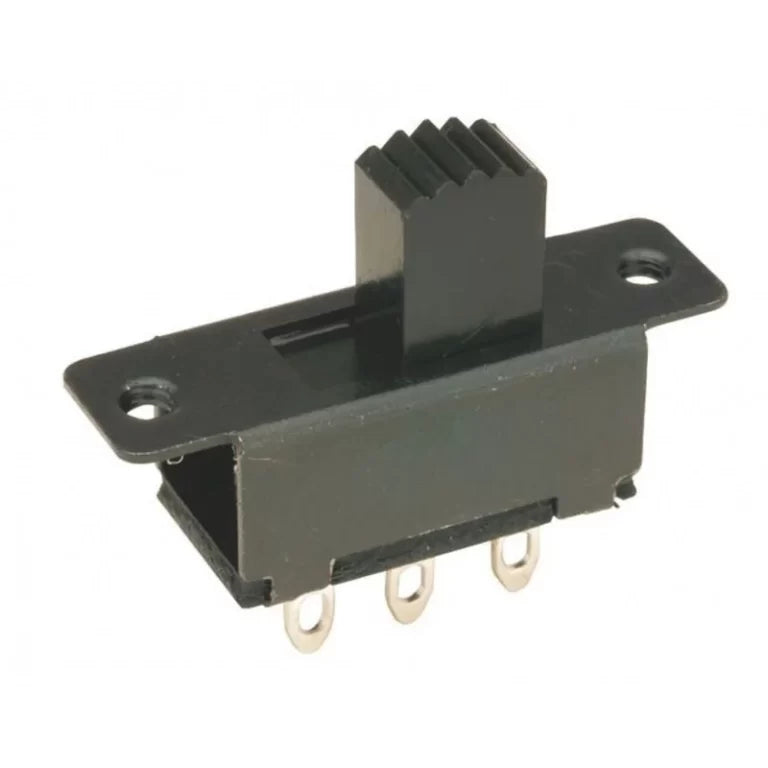Harish Projects
Slide Switch Button
Slide Switch Button
Couldn't load pickup availability
Share
Specification
- Pin: 3 Pins
- Voltage: 3.7 to 12V
- Switching Function: Forward-Backward
- More: See descriptions
Description
A slide switch button, also known as a toggle switch, is an electronic component used to control the flow of electricity in a circuit. It consists of a small rectangular box with a lever that slides back and forth to open or close a circuit.
Here are some technical specifications of a slide switch button:
1. Contact Rating: This refers to the maximum amount of current and voltage that the switch can safely handle. It is typically expressed in amps and volts.
2. Contact Resistance: This is the resistance that the switch creates when closed. It is typically measured in ohms and should be as low as possible to minimize power loss.
3. Operating Force: This is the force required to move the switch lever from one position to another. It is typically measured in grams or ounces and can vary depending on the switch design.
4. Life Expectancy: This refers to the number of cycles or operations the switch can endure before it begins to fail. It is typically measured in thousands or millions of cycles.
5. Terminal Type: The slide switch button can have different types of terminals depending on the application. Some common types include solder terminals, screw terminals, and PCB mounting terminals.
6. Switching Function: The slide switch button can have different switching functions, such as SPST (single-pole, single-throw), SPDT (single-pole, double-throw), DPST (double-pole, single-throw), and DPDT (double-pole, double-throw).
7. Actuator Type: The slide switch button can have different types of actuators, such as lever, rocker, or paddle.
Overall, the technical specifications of a slide switch button depend on the specific application and requirements of the circuit it is being used in.

Nice product

